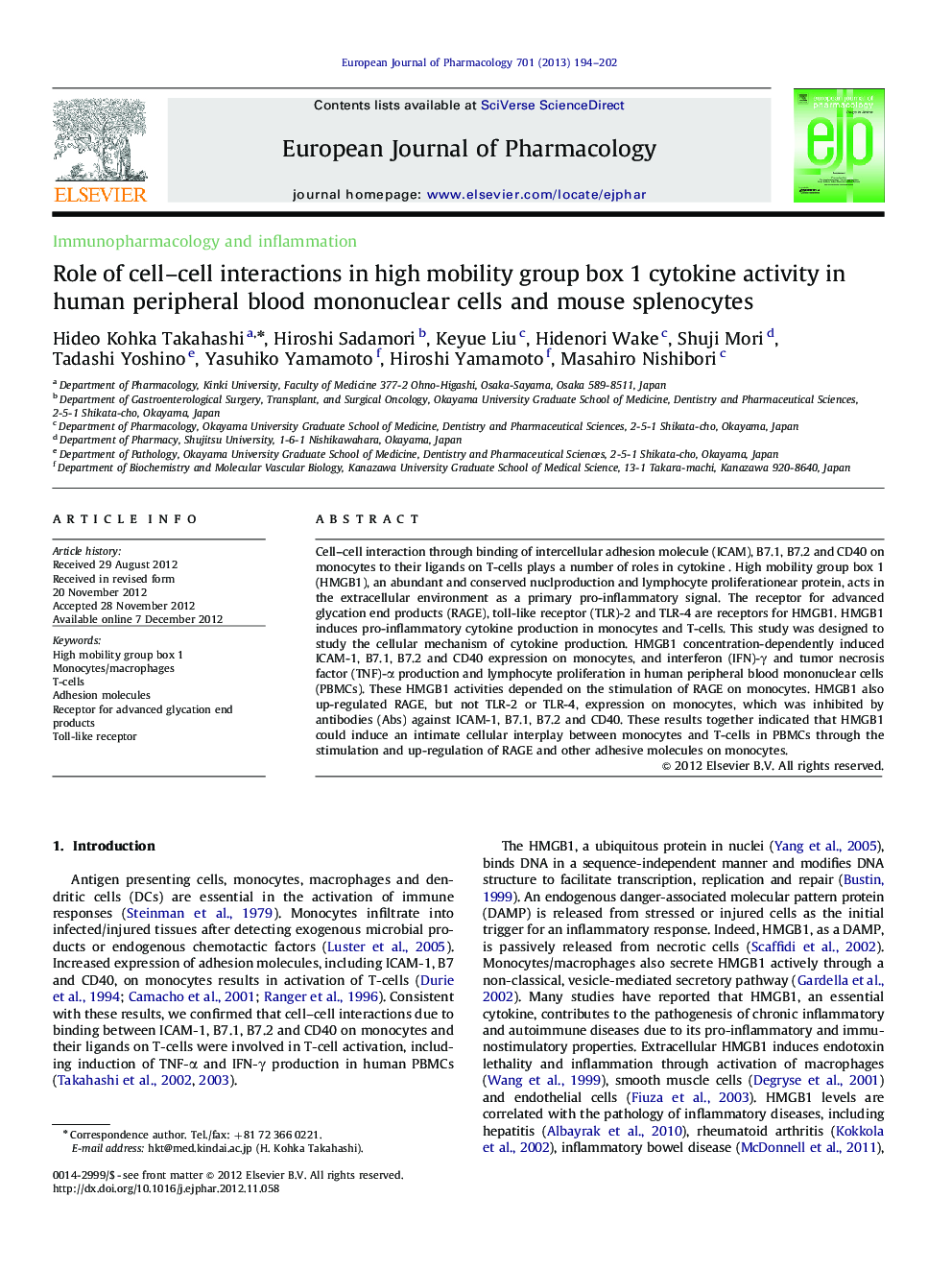| Article ID | Journal | Published Year | Pages | File Type |
|---|---|---|---|---|
| 5828833 | European Journal of Pharmacology | 2013 | 9 Pages |
Cell-cell interaction through binding of intercellular adhesion molecule (ICAM), B7.1, B7.2 and CD40 on monocytes to their ligands on T-cells plays a number of roles in cytokine . High mobility group box 1 (HMGB1), an abundant and conserved nuclproduction and lymphocyte proliferationear protein, acts in the extracellular environment as a primary pro-inflammatory signal. The receptor for advanced glycation end products (RAGE), toll-like receptor (TLR)-2 and TLR-4 are receptors for HMGB1. HMGB1 induces pro-inflammatory cytokine production in monocytes and T-cells. This study was designed to study the cellular mechanism of cytokine production. HMGB1 concentration-dependently induced ICAM-1, B7.1, B7.2 and CD40 expression on monocytes, and interferon (IFN)-γ and tumor necrosis factor (TNF)-α production and lymphocyte proliferation in human peripheral blood mononuclear cells (PBMCs). These HMGB1 activities depended on the stimulation of RAGE on monocytes. HMGB1 also up-regulated RAGE, but not TLR-2 or TLR-4, expression on monocytes, which was inhibited by antibodies (Abs) against ICAM-1, B7.1, B7.2 and CD40. These results together indicated that HMGB1 could induce an intimate cellular interplay between monocytes and T-cells in PBMCs through the stimulation and up-regulation of RAGE and other adhesive molecules on monocytes.
Graphical abstractDownload high-res image (305KB)Download full-size image
